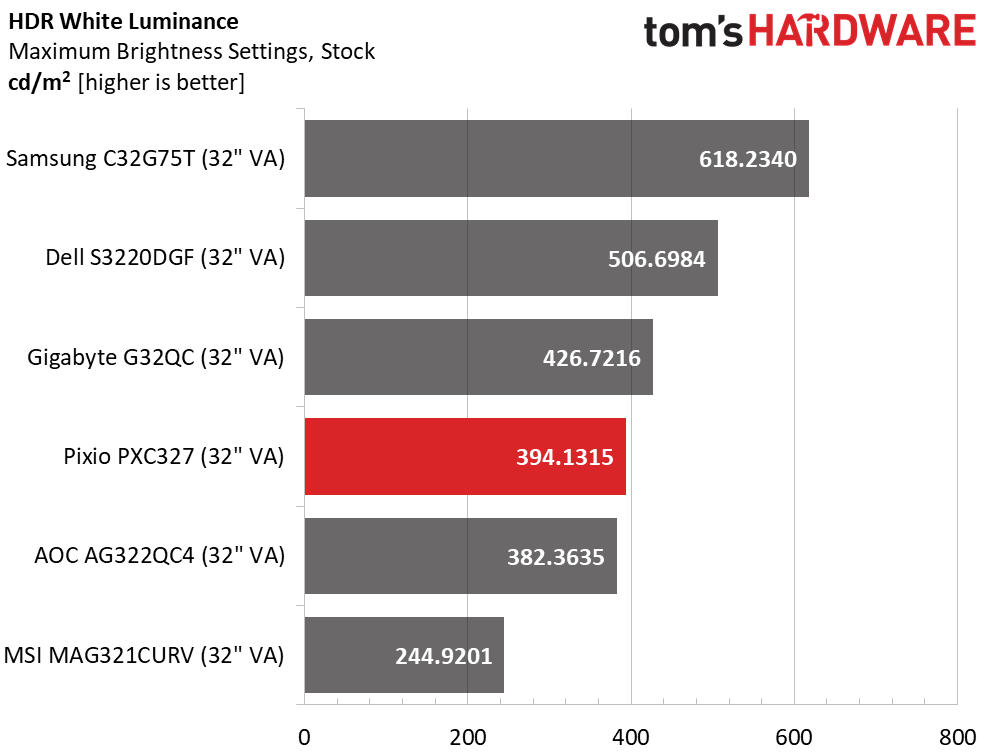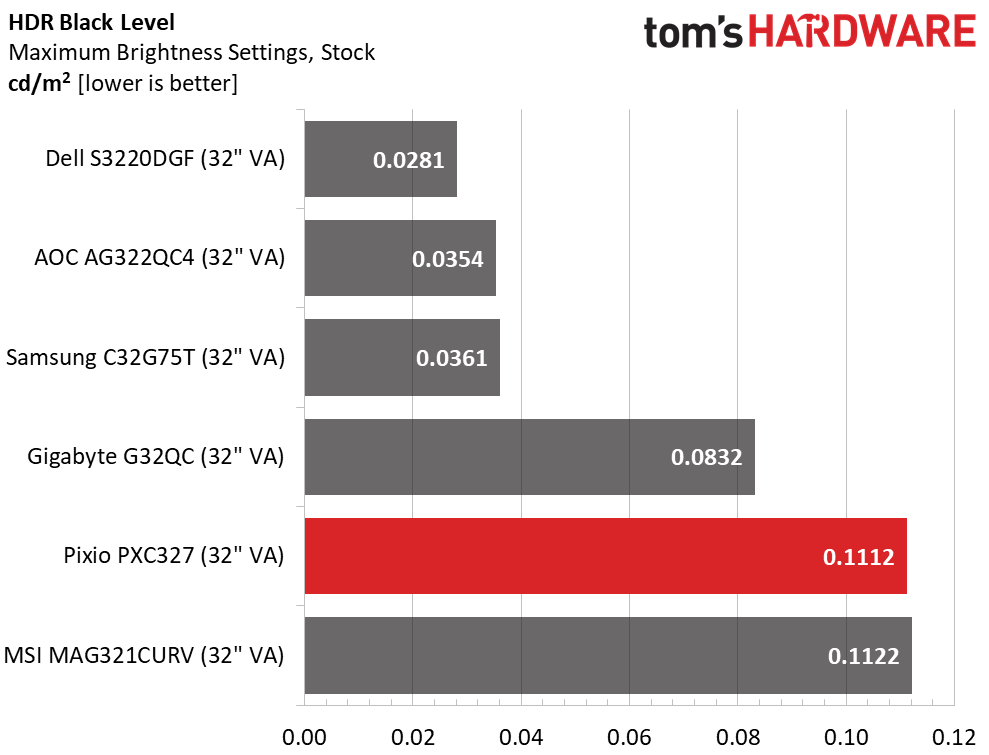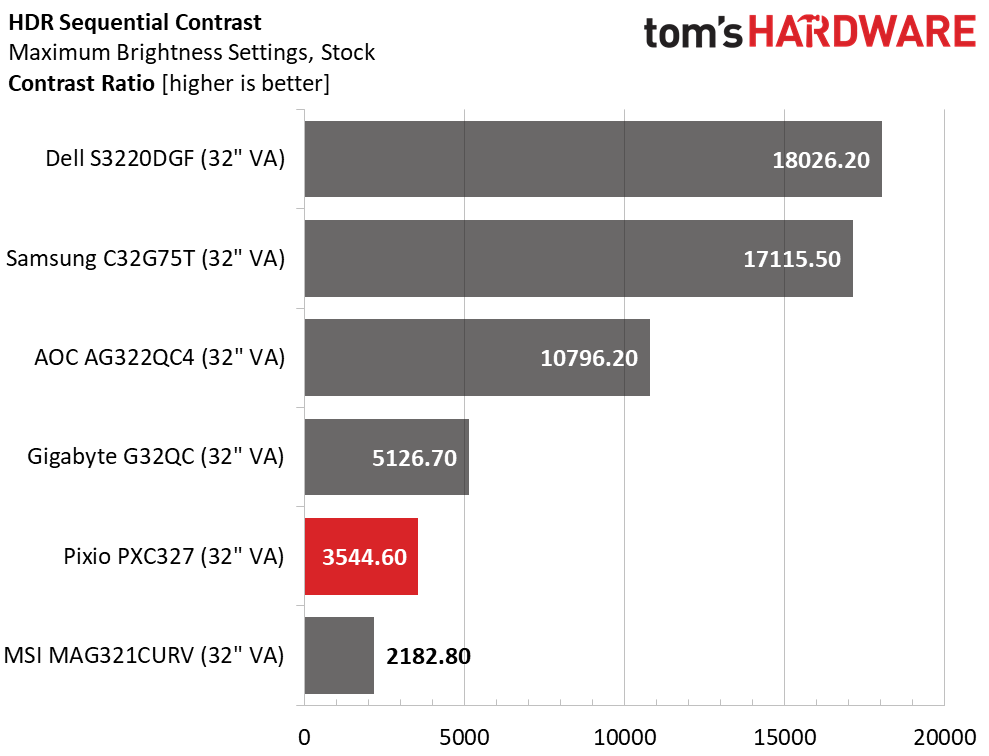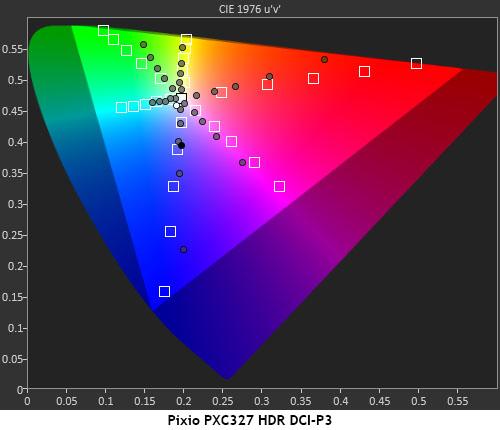Why you can trust Tom's Hardware
To learn about our HDR testing, see our breakdown of how we test PC monitors.
The PXC327 accepts HDR10 signals, but you’ll have to switch modes manually after the signal is applied and back again when you return to SDR content. All image controls are locked out in HDR mode, but you can still use Adaptive-Sync and the overdrive options.
HDR Brightness & Contrast



The PXC327 nearly makes it to 400 nits in HDR mode. It doesn't use dynamic contrast, but its excellent VA panel manages an impressive 3,544.6:1 contrast ratio. The top three screens are using dynamic contrast to great effect.
Unfortunately, the HDR goodness ends here, as we found some issues during the grayscale, EOTF and color tests.
Grayscale, EOTF & Color
Our HDR benchmarking uses Portrait Displays’ Calman software. To learn about our HDR testing, see our breakdown of how we test PC monitors.


The PXC327’s HDR grayscale run isn’t too bad, with the only errors being a blue tint in the 90-100% brightness steps. But the EOTF strays quite far from the reference line with no clear transition to tone-mapping. The lower steps are too bright, which makes many dark scenes look washed out and gray. Meanwhile, the transition point is too dark, which further reduces depth.
The main issue is with color saturation, which is clearly under the mark. We suspect a tuning problem because color tracks linearly but runs out of juice well short of the 100% saturation point. The HDR image is flat and a bit washed out because of this.
Get Tom's Hardware's best news and in-depth reviews, straight to your inbox.
Current page: HDR Performance
Prev Page Grayscale, Gamma and Color Next Page Viewing Angles, Uniformity, Response & Lag
Christian Eberle is a Contributing Editor for Tom's Hardware US. He's a veteran reviewer of A/V equipment, specializing in monitors. Christian began his obsession with tech when he built his first PC in 1991, a 286 running DOS 3.0 at a blazing 12MHz. In 2006, he undertook training from the Imaging Science Foundation in video calibration and testing and thus started a passion for precise imaging that persists to this day. He is also a professional musician with a degree from the New England Conservatory as a classical bassoonist which he used to good effect as a performer with the West Point Army Band from 1987 to 2013. He enjoys watching movies and listening to high-end audio in his custom-built home theater and can be seen riding trails near his home on a race-ready ICE VTX recumbent trike. Christian enjoys the endless summer in Florida where he lives with his wife and Chihuahua and plays with orchestras around the state.